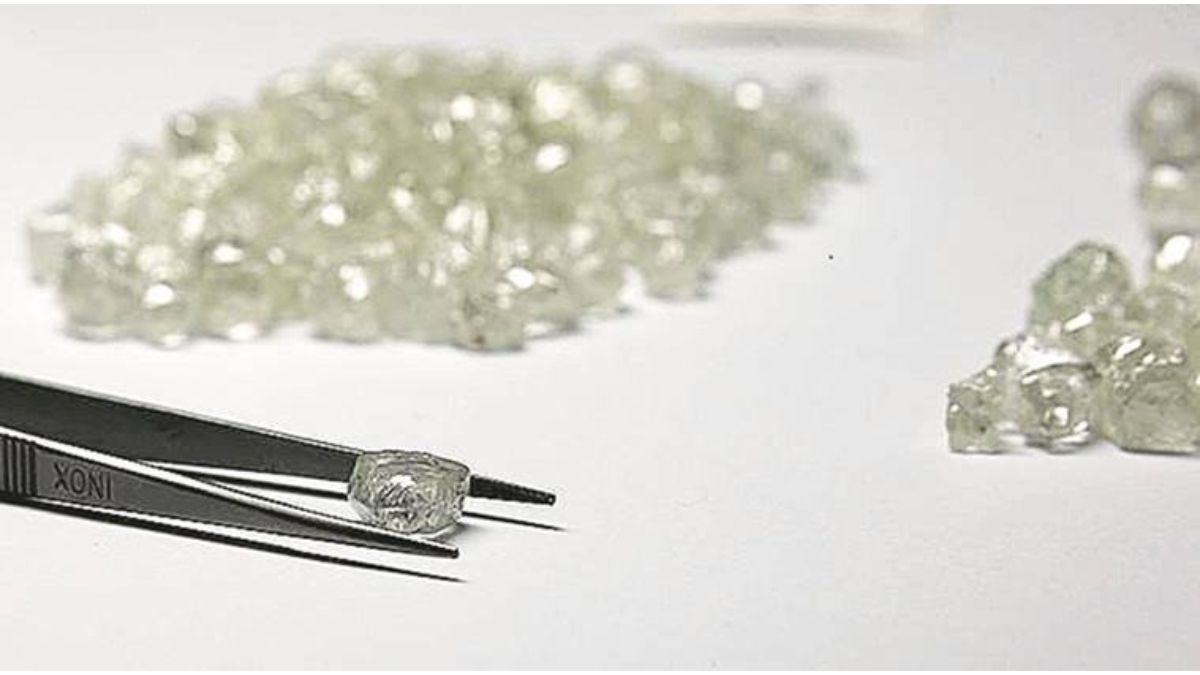Diamonds may be forever, but the livelihoods of traditional diamond artisans in Surat are not
These artisans, who work with natural diamonds, continue to struggle to make ends meet and face a range of financial and social challenges

Advertisement
Surat : Surat, a city in the Indian state of Gujarat, has long been known as the diamond capital of the world and has established itself as a leader in the production of lab-grown diamonds.However, while the growth of the lab-grown diamond industry in Surat has brought economic benefits to the city, it has not helped the traditional diamond artisans who have long been the backbone of Surat’s diamond industry.
These artisans, who work with natural diamonds, continue to struggle to make ends meet and face a range of financial and social challenges.
Lab-grown diamonds, also known as synthetic or cultured diamonds, are created in a laboratory setting through a process that simulates the conditions necessary for natural diamond formation. These diamonds have the same chemical and physical properties as natural diamonds, but they are less expensive and more sustainable to produce.
The lab-grown diamond industry is still relatively new, but it is growing rapidly. In 2019, the global lab-grown diamond market was valued at around $16 billion, and it is expected to continue growing in the coming years. Surat is at the forefront of this industry, with several companies based in the city producing high-quality lab-grown diamonds.
The diamond artisans in Surat are predominantly from the Saurashtra region of Gujarat, and they come to the city to work in the diamond industry. They work long hours in difficult conditions, and many of them live in cramped and unhygienic conditions in the city’s slums. Despite their hard work, they often struggle to make ends meet, and many of them are heavily indebted.
The financial stress and lack of employment opportunities have taken a heavy toll on the diamond artisans, and many of them have resorted to drastic measures to cope. Suicide rates among diamond artisans in Surat are alarmingly high, with reports suggesting that around one diamond artisan takes his own life every five to six days. The exact reasons for these suicides are complex, but they are often linked to financial distress and a sense of hopelessness.
The lab-grown diamond industry in Surat has not helped to alleviate the problems faced by traditional diamond artisans. While the lab-grown diamond industry is creating new jobs and attracting investment to the city, these jobs are typically in high-tech manufacturing and require a different set of skills to those possessed by traditional diamond artisans. As a result, the traditional diamond artisans are being left behind.
“Those in diamond Industry are very well aware of the current situation in the sector” said KK Sharma, former executive director of the Indian Diamond Institute (IDI). “Due to very slow motion in natural diamond processing ,a large number of artisans have switched to Lab Grown Diamonds” manufacturing units.Many of unlucky ones couldn’t have managed to get a place of their choice or in the area of their expertise. May be some of these unfortunate individuals who either got trapped by debts or depressed psychologically.”
It is clear that more needs to be done to support the traditional diamond artisans in Surat. The government and industry leaders should work together to provide training and education to help traditional artisans adapt to the changing needs of the diamond industry. There should also be measures to support the financial well-being of diamond artisans, including access to credit and social welfare schemes.
Four jobless diamond polishers in Surat have taken their own lives within 10 days, as a global drop in demand forces factory owners to lay off staff. The Diamond Workers’ Union Gujarat (DWUG) claimed that the workers are being laid off, working shorter weeks or even being paid half-salary.
DWUG has recently submitted a memorandum to the Gujarat Government demanding financial assistance, re-introduction of the Ratnadeep Yojana for skill training to diamond artisans including a monthly stipend.
Surat’s diamond industry has been a key driver of the city’s economic growth, and it has brought prosperity to many. However, it is vital that the benefits of this growth are shared equitably, and that the traditional diamond artisans are not left behind. By investing in the skills and well-being of diamond artisans, Surat can ensure that its diamond industry continues to thrive in the years ahead.
Advertisement

